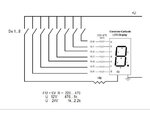Snake126
Newbie level 6
Hello everyone, I am working on a project where I would like to install one of these:
**broken link removed**
and have it display completely random things (dont even have to be numbers) How could I possible go about doing this?
Thanks
**broken link removed**
and have it display completely random things (dont even have to be numbers) How could I possible go about doing this?
Thanks
